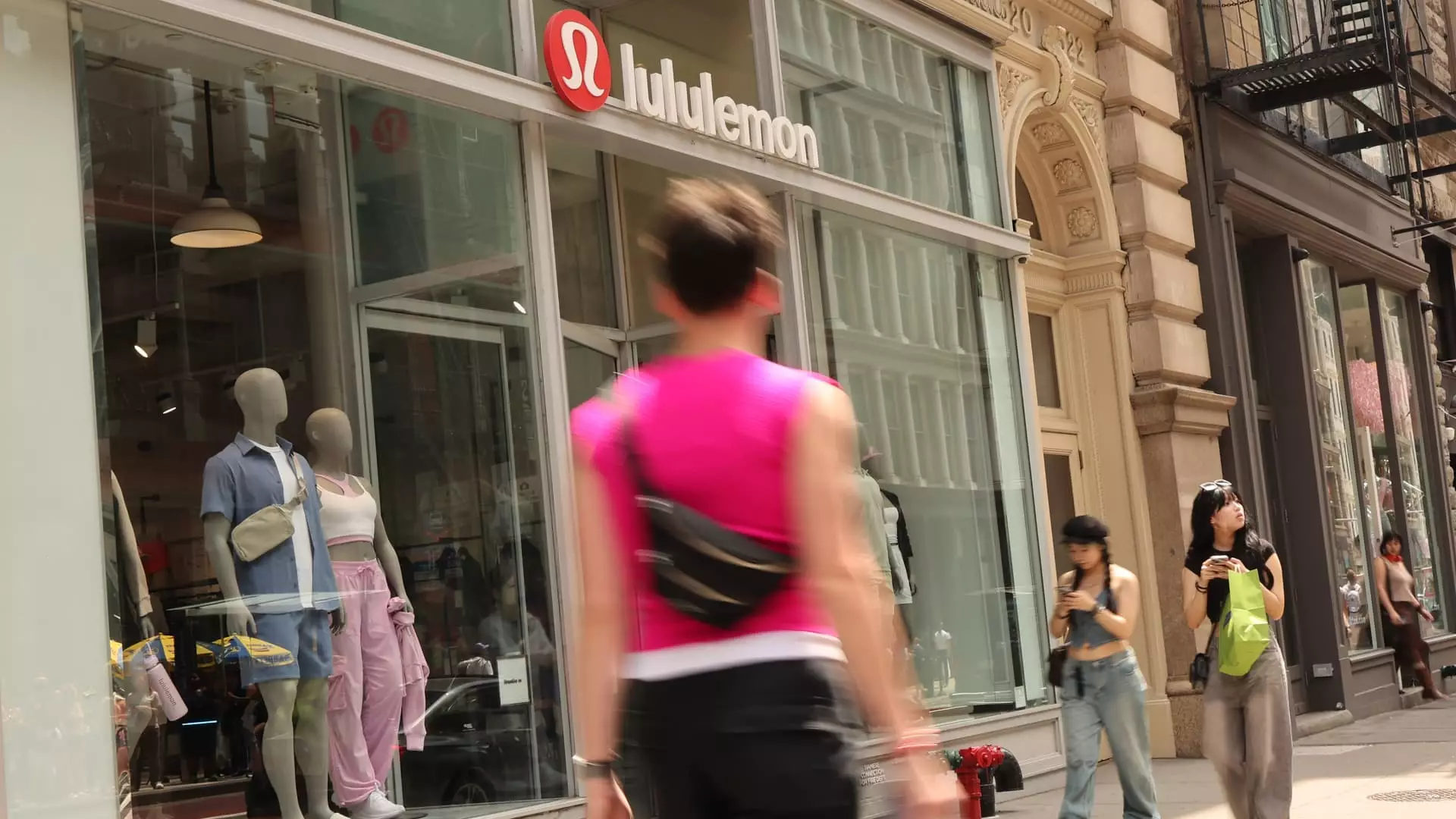On a day that should have been a celebration for Lululemon, the athletic apparel giant found itself in a perilous predicament. While the company did manage to post first-quarter earnings that were slightly above Wall Street’s expectations, the subsequent drop in its full-year earnings outlook signals a deeper issue lurking beneath the surface—a “dynamic macroenvironment” that is anything but conducive to growth. This scenario is strikingly peculiar yet increasingly relatable in today’s volatile marketplace, where even modest gains can feel like glaring missteps.
CEO Calvin McDonald mentioned a commitment to “leverage our strong financial position and competitive advantages,” but this raises an unsettling question: How strong is that position really if the company is feeling the squeeze from external pressures? With shares plummeting by approximately 20% in after-hours trading, the stock market’s reaction was one of cynicism rather than optimism, illustrating an acute disconnect between financial health and market sentiment.
The Tariff Tango: An Ongoing Battle
Lululemon’s struggles are further compounded by an increasingly complex landscape of tariffs and trade tensions that have rattled the retail sector. It is disheartening to see this brand, once lauded for its innovative culture and community-centric ethos, being pulled into the murky waters of geopolitics. With renowned competitors like Gap and Nike also revising their profit expectations, it becomes clear that the tariffs enacted by the previous presidential administration have left scars across the industry. It begs the question: can American consumers and companies endure this economic turbulence without long-term consequences?
What’s particularly alarming is the company’s prior stance, where they believed tariffs would have a minimal impact on profits. This shows an alarming disconnect between expected outcomes and the harsh reality of the ongoing economic climate. Investor confidence is not easily regained, and the gap between Lululemon’s optimistic forecasts and the actual results they’ve delivered should serve as a serious warning to those looking to invest in this seemingly strong brand.
A Revenue Rollercoaster: Low Sales Growth and High Expectations
The first-quarter revenue growth of 7.2% compared to the same quarter the prior year, coupled with a mere 1% rise in comparable sales, speaks volumes. When juxtaposed against the 3% growth analysts had anticipated, it emphasizes the struggles within the company. It feels somewhat ironic that while the company’s popular product lines have seen minimal diversification in offerings, they still can’t quite capture the growth expected in sales. With a gross margin of 58.3% beating expectations, it seems that the financial metrics can sometimes tell a misleading story. But how long can margins provide a cushion for stagnating sales?
Furthermore, predicting second-quarter revenue between $2.54 billion to $2.56 billion, alongside expected earnings per share in the range of $2.85 to $2.90, paints a picture of a company fighting tooth and nail just to stay buoyant—when it should be thriving. Not only does this paint a disturbing portrait of Lululemon’s future but it also puts its investors in a precarious position of uncertainty and risk.
A Culture of High Expectations: The Brand Image at Stake
Lululemon’s brand has always been synonymous with a lifestyle that champions not just athleticism, but a vibrant community. However, this recent performance mishap sheds light on a potential dilution of that very ethos. As many retailers are now struggling and sweeping cuts to profitability become the norm, how will consumers continue to support a brand that seems to be faltering under the weight of market realities?
With competitors swiftly gaining traction, Lululemon must recalibrate its mission and message. The current trajectory suggests that brand loyalty may not sustain earnings that continually miss expectations. This is a pivotal moment: will the company prioritize its innovative spirit, or will it become just another cautionary tale of failure in a crowded marketplace?
In sum, while Lululemon’s balance sheet boasts some encouraging statistics, the underlying symptoms of a company at a crossroads raise significant red flags. This prominent player in activewear must navigate uncertain external pressures while re-invigorating its brand identity amid wavering consumer confidence and economic volatility. The path forward is crucial, and as consumers—and investors—it’s imperative we remain vigilant and discerning, ready to pivot as necessary.


Leave a Reply